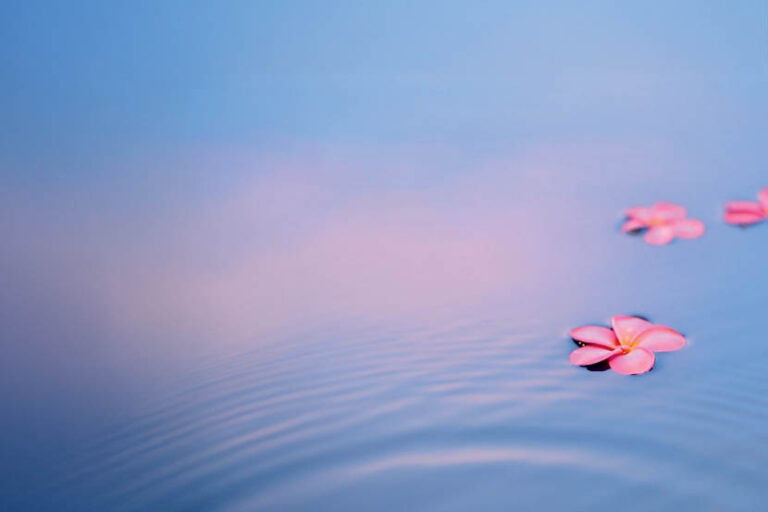
Our planet is full of wonderfully vibrant places, all waiting to be discovered
In colour psychology, green is often associated with nature, and can help to cheer you up or make you feel energised. By the same token, orange can be uplifting and engaging, red can inspire fiery and passionate emotions, while blue is believed to promote serenity and inner calm. So, if the different colours of the rainbow can impact feelings, mood, and behaviour, imagine the experience of being in a destination where they’re blazing their glory everywhere you go. Would you feel inspired, joyful, creative, or curious as a result?
Or a combination of all these emotions, and more? We take a look at the stories and history behind some of the world’s most colourful places.
Chefchaouen, Morocco (Above)

Chefchaouen sits near the towering peaks of the Rif Mountains, in northwest Morocco, and is famous for its labyrinth of quaint alleyways, all painted powder blue. Shortly after the city was founded in 1471, it became the home of 15th-century Jewish exiles from Europe. It’s believed that the blue originated with the Jewish community, who stained the buildings a similar shade to the sky, to symbolise heaven and be reminded of God.
Today, Chefchaouen residents still regularly touch up the paintwork of their medina homes, keeping historical traditions alive.
Bo-Kaap, Cape Town, South Africa

When built in the 1760s, the houses that are now a strikingly colourful and notable feature of Bo-Kaap were painted plain white. They were lived in and rented by families from Malaysia, Indonesia, and other
parts of Africa, who were brought to the Cape region to work as slaves. At the end of apartheid, as the residents were finally allowed to buy the properties, they chose to paint them in vivacious colours to express their individuality and freedom. Today, no two houses on the same street are the same shade – and if an owner wants to change the outside colour, they must consult with their neighbours first.
The Azores, Portugal

Nine volcanic islands make up the Azores archipelago in the North Atlantic Ocean, and each has been given a colourful nickname. São Miguel is known as the green island, thanks to its lush subtropical countryside, while São Jorge is referred to as the brown island because of its rocky coastal cliffs.
Three other islands are named after flowers: walls of blue hydrangeas stretch for kilometres on Faial (hence its name, the blue island); purple hydrangeas and lilacs are abundant on Terceira (the lilac island); and pink azaleas flourish on Flores (the pink island). A luxuriantly colourful bouquet indeed.
Seven Coloured Earths, Chamarel, Mauritius

Sand dunes can be a glorious golden colour or a warm shade of red. However, a series of dunes in southwestern Mauritius have settled into rolling bands of seven colours – red, violet, green, blue, brown, yellow, and purple. The popular natural landmark is thought to be the result of rare volcanic activity and is certainly a geological oddity. But there’s another remarkable feature: despite being pounded by tropical downpours that can be torrential, the distinctive dunes don’t appear to have been eroded. Instead, the rain has carved patterns into them.
Nyhavn, Copenhagen, Denmark

It’s easy to see why Copenhagen’s quayside is one of the most photographed areas of Denmark’s capital. A row of charming gabled town houses – in shades of red, blue, yellow, and pink – is a welcoming sight as you arrive in Nyhavn harbour, and the once raucous, sailor-filled hostelries are now stylish bars. The oldest house along the canal, Nyhavn 9, was built in 1681 and has remained remarkably unaltered since that time.
Houses 18, 20, and 67 are all former homes of Hans Christian Andersen, the celebrated Danish author of fairy tales such as The Little Mermaid and The Princess and the Pea.
Jodhpur, India

Most travellers visit Jodhpur, in Rajasthan, to see the magnificent Mehrangarh Fort. While the 15th-century royal residence is considered a must-see, a trip to the city is not complete without a wander around the blue streets of the old town. Known as the Blue City, one legend about Jodhpur goes that its homes were painted by the Brahmin community, to differentiate themselves from the lower-caste communities. Another belief is that blue is a sacred colour associated with Lord Shiva, while some say blue buildings are soothing and cool in the summer sun, and also act as an insect repellent.
La Boca, Buenos Aires, Argentina

A suburb, or barrio, of Argentina’s capital, La Boca is home to the city’s Boca Juniors yellow-and-blue football stadium, as well as El Caminito, an alley of brightly painted tenement shacks. The buildings, which were originally home to Genoese port workers, were covered in corrugated zinc and decorated with any leftover marine paint from the shipyards. Today, the popular tourist haunt is still awash with colour and is famed for its tango dancers, cantinas, and quirky, giant papier-mâché statues of celebrities, such as Eva Perón, the country’s best-known First Lady, and footballer Maradona.
Vinicunca, Cusco, Peru

Also known as Peru’s Rainbow Mountain, Vinicunca is a natural wonder in the Andes a few hours’ drive from the city of Cusco. To view the breathtaking phenomenon involves a vertiginous hike (the mountain lies 5,200 metres above sea level), but even so, many do make the trek to see the geological spectacle, which was formed from the sediment of 14 different-coloured minerals. Vinicunca, with its gold, turquoise, and lavender layers, was only discovered in the mid-2010s, when glacier caps melted in the Peruvian Andes, revealing the marvel that lay underneath.
Kinsale, Republic of Ireland

A historic coastal town in County Cork, Kinsale boasts a wealth of accolades. It has been hailed as the gourmet capital of Ireland, and is often cited as one of the country’s most picturesque and fashionable destinations. The town is also the Emerald Isle’s top spot for flamboyantly painted buildings. Stroll along its maze of narrow streets and you’ll find bookshops, art galleries, cafés, boutiques, and craft workshops residing inside buildings painted purple, pink, orange, green, turquoise, and other shades besides. The warm, friendly locals are often said to be colourful characters, too.
Izamal, Yucatán, Mexico

It seems appropriate that a town once recognised as the centre of worship for the sun god Kinich Kakmó is painted a sunny shade of marigold yellow. Almost every house, shop, and church is the same golden hue as Izamal’s impressive monastery, Convento de San Antonio de Padua, which is actually built on the flattened top of a Mayan pyramid.
Burano, Venice Lagoon, Italy

You don’t have to travel far to escape the hustle and bustle of Venice. Board a water bus for a 45-minute journey across the lagoon to beautiful Burano, a tranquil island where the pace of life is noticeably slower, and the colour of the buildings distinctively brighter. One theory as to why Burano has such vibrantly coloured houses is linked to the local fishermen – the eye-catching colours are said to act as a navigational aid and are easy to spot offshore, even on foggy days, helping boats to steer safely home. Alongside fishing, the island is well known for its traditional lacemaking and glass-blowing.
Nuuk, Greenland

Colour-coding buildings can be helpful. If, for example, you know that hospitals are yellow, and doctors and nurses live in yellow homes, it’s easy to know where to go in an emergency. If you’re aware police stations are painted black, that’s the colour of building you look for to report a crime. That was the system introduced when wooden properties were first built in Greenland’s capital in 1721, with the colour of each timber kit indicating its function. The telephone company was housed in green premises, factories were blue, and commercial buildings were red.


















